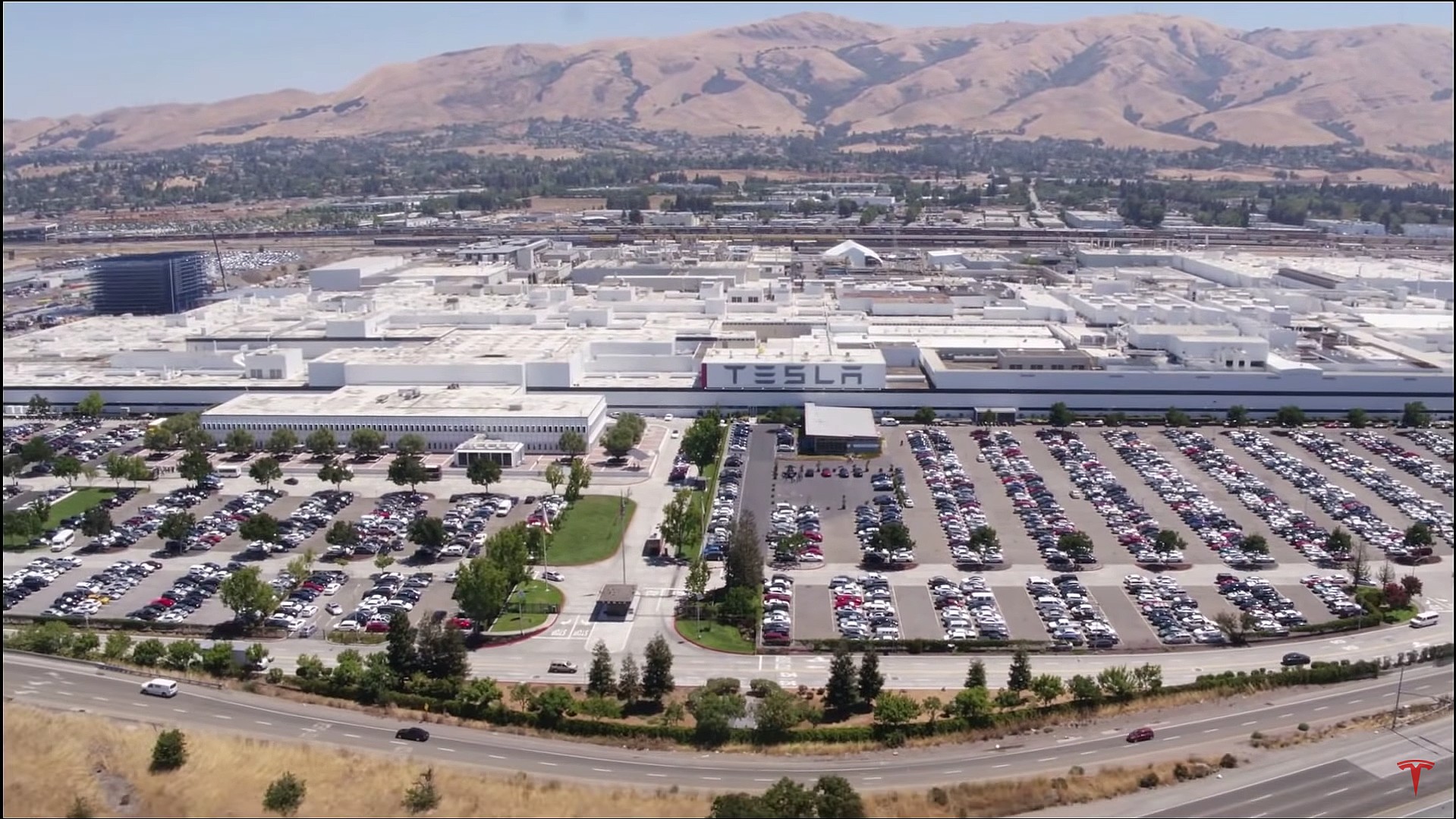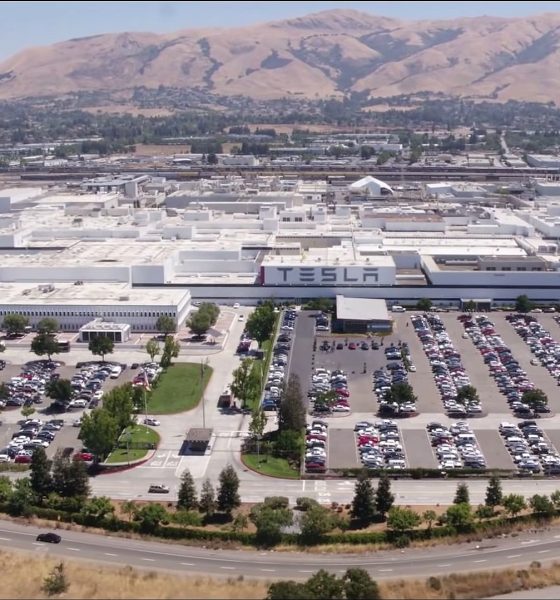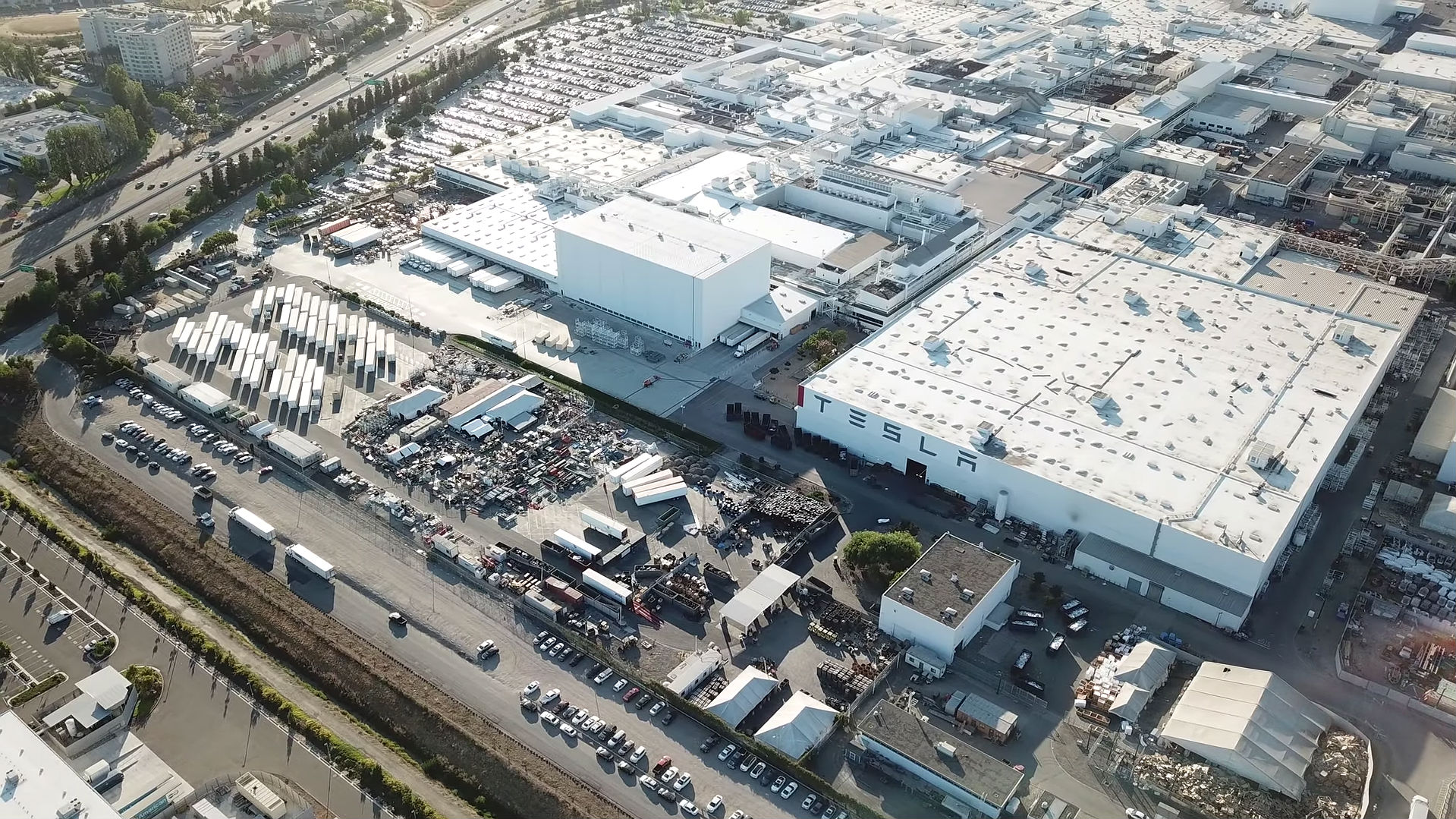

News
Tesla agrees to pay fine, install solar project in air quality case with Bay Area Air District
Tesla has agreed to pay a $1 million fine and install a solar roof project on top of its Fremont Factory in Northern California as part of a settlement with the Bay Area Air Quality Management District (BAAQMD). Tesla was found to have 33 separate violations at the Fremont Factory, the BAAQMD said in a press release. Tesla settled with the organization on May 7th.
“The Bay Area Air Quality Management District announced today that Tesla, Inc., has agreed to pay a $1 million penalty and install a solar roof project to settle air quality violations at its manufacturing plant in Fremont,” the press release from the BAAQMD indicated. According to the report, Tesla had 33 different violations that included emissions exceeding Tesla’s permit limits, installing or modifying equipment without proper permits, failure to conduct required emissions testing, failure to maintain records, and failure to report information to the Air District in a timely manner.
Interestingly, the document does not include any additional details regarding the violations. One of the most peculiar citations is for “failure to conduct required emissions testing” because Tesla’s all-electric cars do not have tailpipes, making them free of emissions.
A snapshot from a drone flyover of the Tesla Fremont factory on June 29, 2018. [Credit: DarkSoldier 360/YouTube]
Nevertheless, Tesla agreed to pay the $1 million fine and install a solar roof project that will “provide emissions-free electric power and also provide reliability in the event that grid power is unavailable due to Public Safety Power Shutoffs or other reasons.”
“This settlement requires Tesla’s compliance with Air District regulations at its Fremont facility and demonstrates the Air District’s continuing efforts to ensure strict compliance with air pollution regulations while seeking mutually beneficial solutions for the community,” Jack Broadbent, the Air District’s Executive Officer said. “As part of this settlement, Tesla has agreed to implement a community microgrid project, which leverages the company’s technological expertise in developing next generation power here in the Bay Area.”
The Solar Roof project will be approximately 160 kW and will be paired with two Powerpacks for energy storage. Tesla will fund the microgrid system, and the BAAQMD says that the project focuses on improving local air quality and public health in the Bay Area’s most heavily impacted areas. Lowering electricity costs and providing cleaner air to the community are also listed as the project’s main goals.
Additionally, Tesla will implement a comprehensive environmental management system that will track environmental requirements. It will also ensure that managers and other high-level employees are trained on the compliance of the air quality measures and ensure Tesla’s full compliance as a company moving forward. “Tesla has already begun implementing such a system, but today’s settlement agreement will make this a legally binding and enforceable commitment,” the press release says.
BAAQMD says that all violations that led to Tesla’s investigation and the settlement have been corrected, and the Fremont Factory is once again fully compliant. BAAQMD will use the $1 million fine to improve air quality in the Bay Area.
Tesla is one of the most environmentally friendly companies in the world. Because of the automaker’s pledge to creating all-electric, sustainable, and Earth-friendly powertrains, over 16.4 million tons of CO2 have been saved by Tesla vehicles in the United States, according to the company’s website.
The press release entailing the fine and solar roof project from BAAQMD is available below.
settle_tesla_210507_2021_007 pdf by Joey Klender on Scribd

News
Tesla FSD fleet is nearing 7 billion total miles, including 2.5 billion city miles
As can be seen on Tesla’s official FSD webpage, vehicles equipped with the system have now navigated over 6.99 billion miles.

Tesla’s Full Self-Driving (Supervised) fleet is closing in on almost 7 billion total miles driven, as per data posted by the company on its official FSD webpage.
These figures hint at the massive scale of data fueling Tesla’s rapid FSD improvements, which have been quite notable as of late.
FSD mileage milestones
As can be seen on Tesla’s official FSD webpage, vehicles equipped with the system have now navigated over 6.99 billion miles. Tesla owner and avid FSD tester Whole Mars Catalog also shared a screenshot indicating that from the nearly 7 billion miles traveled by the FSD fleet, more than 2.5 billion miles were driven inside cities.
City miles are particularly valuable for complex urban scenarios like unprotected turns, pedestrian interactions, and traffic lights. This is also the difference-maker for FSD, as only complex solutions, such as Waymo’s self-driving taxis, operate similarly on inner-city streets. And even then, incidents such as the San Francisco blackouts have proven challenging for sensor-rich vehicles like Waymos.
Tesla’s data edge
Tesla has a number of advantages in the autonomous vehicle sector, one of which is the size of its fleet and the number of vehicles training FSD on real-world roads. Tesla’s nearly 7 billion FSD miles then allow the company to roll out updates that make its vehicles behave like they are being driven by experienced drivers, even if they are operating on their own.
So notable are Tesla’s improvements to FSD that NVIDIA Director of Robotics Jim Fan, after experiencing FSD v14, noted that the system is the first AI that passes what he described as a “Physical Turing Test.”
“Despite knowing exactly how robot learning works, I still find it magical watching the steering wheel turn by itself. First it feels surreal, next it becomes routine. Then, like the smartphone, taking it away actively hurts. This is how humanity gets rewired and glued to god-like technologies,” Fan wrote in a post on X.
News
Tesla starts showing how FSD will change lives in Europe
Local officials tested the system on narrow country roads and were impressed by FSD’s smooth, human-like driving, with some calling the service a game-changer for everyday life in areas that are far from urban centers.

Tesla has launched Europe’s first public shuttle service using Full Self-Driving (Supervised) in the rural Eifelkreis Bitburg-Prüm region of Germany, demonstrating how the technology can restore independence and mobility for people who struggle with limited transport options.
Local officials tested the system on narrow country roads and were impressed by FSD’s smooth, human-like driving, with some calling the service a game-changer for everyday life in areas that are far from urban centers.
Officials see real impact on rural residents
Arzfeld Mayor Johannes Kuhl and District Administrator Andreas Kruppert personally tested the Tesla shuttle service. This allowed them to see just how well FSD navigated winding lanes and rural roads confidently. Kruppert said, “Autonomous driving sounds like science fiction to many, but we simply see here that it works totally well in rural regions too.” Kuhl, for his part, also noted that FSD “feels like a very experienced driver.”
The pilot complements the area’s “Citizen Bus” program, which provides on-demand rides for elderly residents who can no longer drive themselves. Tesla Europe shared a video of a demonstration of the service, highlighting how FSD gives people their freedom back, even in places where public transport is not as prevalent.
What the Ministry for Economic Affairs and Transport says
Rhineland-Palatinate’s Minister Daniela Schmitt supported the project, praising the collaboration that made this “first of its kind in Europe” possible. As per the ministry, the rural rollout for the service shows FSD’s potential beyond major cities, and it delivers tangible benefits like grocery runs, doctor visits, and social connections for isolated residents.
“Reliable and flexible mobility is especially vital in rural areas. With the launch of a shuttle service using self-driving vehicles (FSD supervised) by Tesla in the Eifelkreis Bitburg-Prüm, an innovative pilot project is now getting underway that complements local community bus services. It is the first project of its kind in Europe.
“The result is a real gain for rural mobility: greater accessibility, more flexibility and tangible benefits for everyday life. A strong signal for innovation, cooperation and future-oriented mobility beyond urban centers,” the ministry wrote in a LinkedIn post.
News
Tesla China quietly posts Robotaxi-related job listing
Tesla China is currently seeking a Low Voltage Electrical Engineer to work on circuit board design for the company’s autonomous vehicles.

Tesla has posted a new job listing in Shanghai explicitly tied to its Robotaxi program, fueling speculation that the company is preparing to launch its dedicated autonomous ride-hailing service in China.
As noted in the listing, Tesla China is currently seeking a Low Voltage Electrical Engineer to work on circuit board design for the company’s autonomous vehicles.
Robotaxi-specific role
The listing, which was shared on social media platform X by industry watcher @tslaming, suggested that Tesla China is looking to fill the role urgently. The job listing itself specifically mentions that the person hired for the role will be working on the Low Voltage Hardware team, which would design the circuit boards that would serve as the nervous system of the Robotaxi.
Key tasks for the role, as indicated in the job listing, include collaboration with PCB layout, firmware, mechanical, program management, and validation teams, among other responsibilities. The role is based in Shanghai.
China Robotaxi launch
China represents a massive potential market for robotaxis, with its dense urban centers and supportive policies in select cities. Tesla has limited permission to roll out FSD in the country, though despite this, its vehicles have been hailed as among the best in the market when it comes to autonomous features. So far, at least, it appears that China supports Tesla’s FSD and Robotaxi rollout.
This was hinted at in November, when Tesla brought the Cybercab to the 8th China International Import Expo (CIIE) in Shanghai, marking the first time that the autonomous two-seater was brought to the Asia-Pacific region. The vehicle, despite not having a release date in China, received a significant amount of interest among the event’s attendees.








